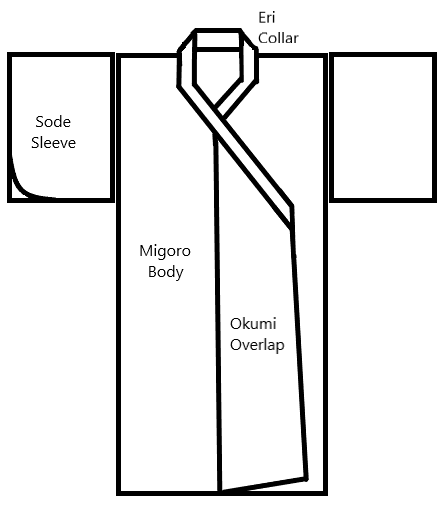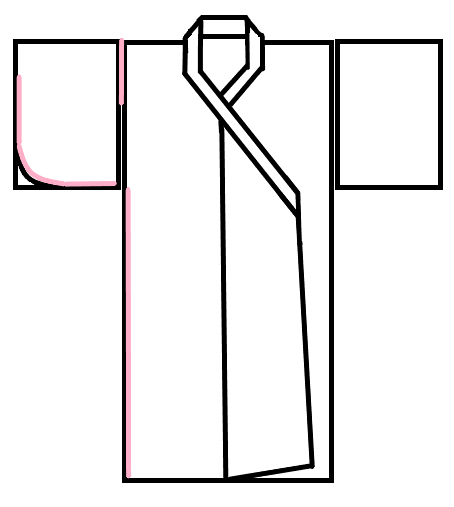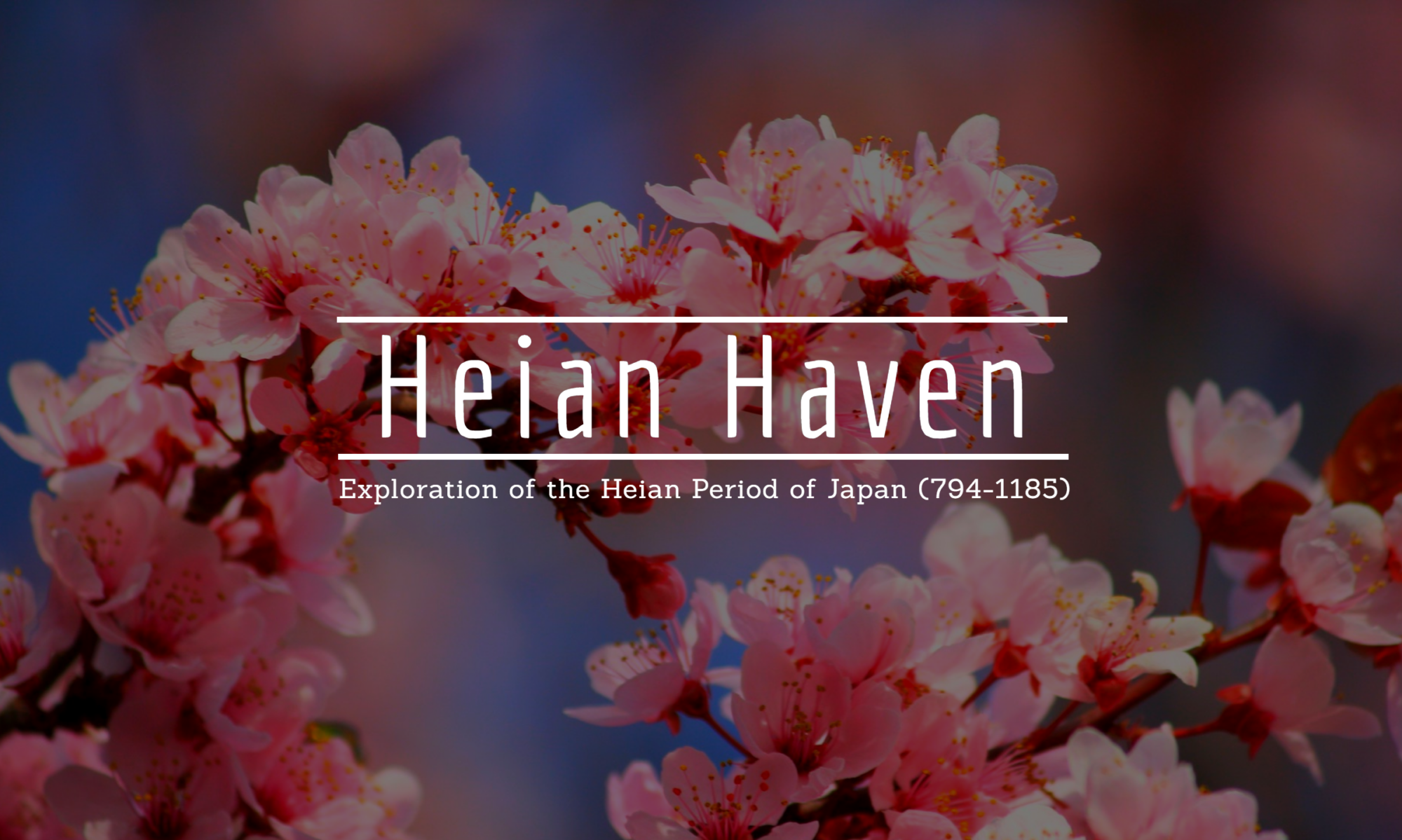One of the fun parts of Japanese costuming is once you get the basic idea in your head of how to construct a garment, you are essentially prepared to make the majority of top of the body (hangs from the shoulders) garments. Kosode, hitoe, ginu, uchigi, uwagi, hitatare – you can build them all! Bonus- all of these garments are also incredibly similar in construction to the modern kimono.
Here is a basic front view diagram of a top of body Japanese garment:

That image should make it easier to visualize the kosode that is being worked on.
So you might have noticed that one of the sode (sleeves) has a curved line in the bottom outside corner. That’s because I’m not sure if it should be curved or straight. The kosode is called that because of the sleeve, ko meaning small and sode, sleeve. Small refers to the opening of the sleeve. Unlike the other women’s garments of the Heian period that layer on top, the kosode sleeve is sewn shut for most of the front/outside edge.
Another diagram:

The pink lines represent stitching. The sleeve is sewn closed at the bottom and front, leaving an opening big enough for the hand to slip through. The sleeve is attached at the shoulder, but is not completely attached to the body of the garment. This creates a “swinging sleeve”. The back of the sleeve nearest the body and a section of the side seam are both left open.
Back to the sleeve corner…In later periods the kosode becomes an outer garment and is, in my opinion, the direct ancestor of the kimono. And it has rounded sleeve corners. But I have no idea when the sleeve went from a stitched bottom and outside edge to having a gentle curve in the corner. It’s a natural progression from a construction standpoint. And I’m strongly leaning toward rounding the corners of my sleeves.
Sewing progress-wise I’m hemming the okumi.
And the tanka for today:
I’ve watched your colors / Change and deepen over time / Yellow, now gold and / The festive frock of autumn / Dances with wind on the lawn.
